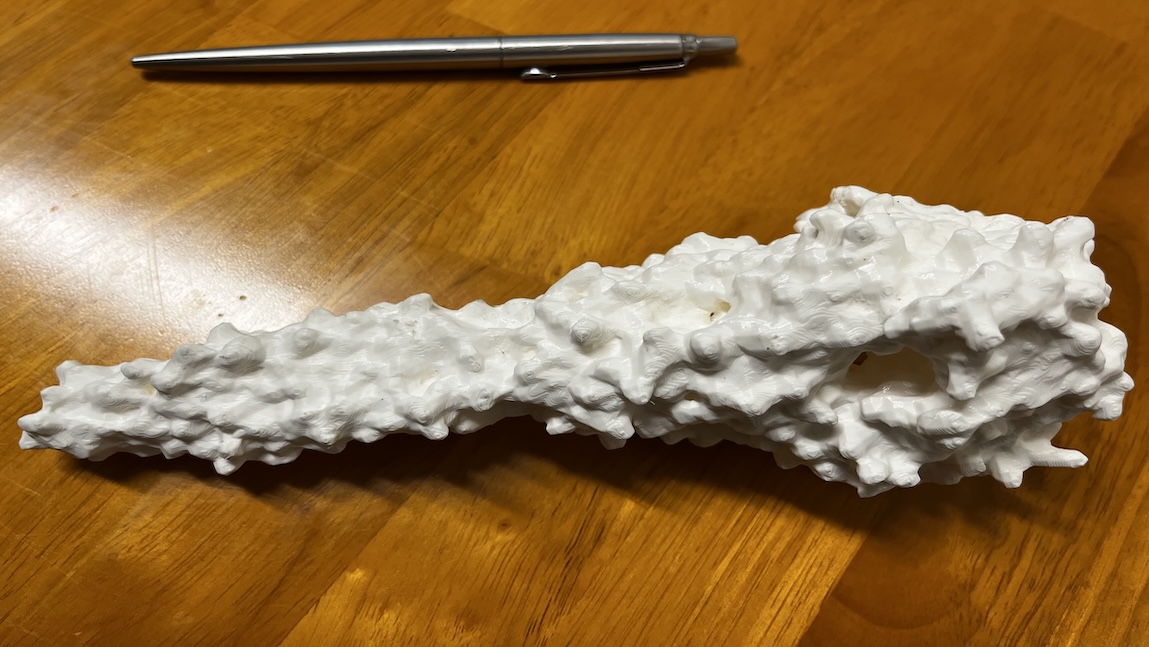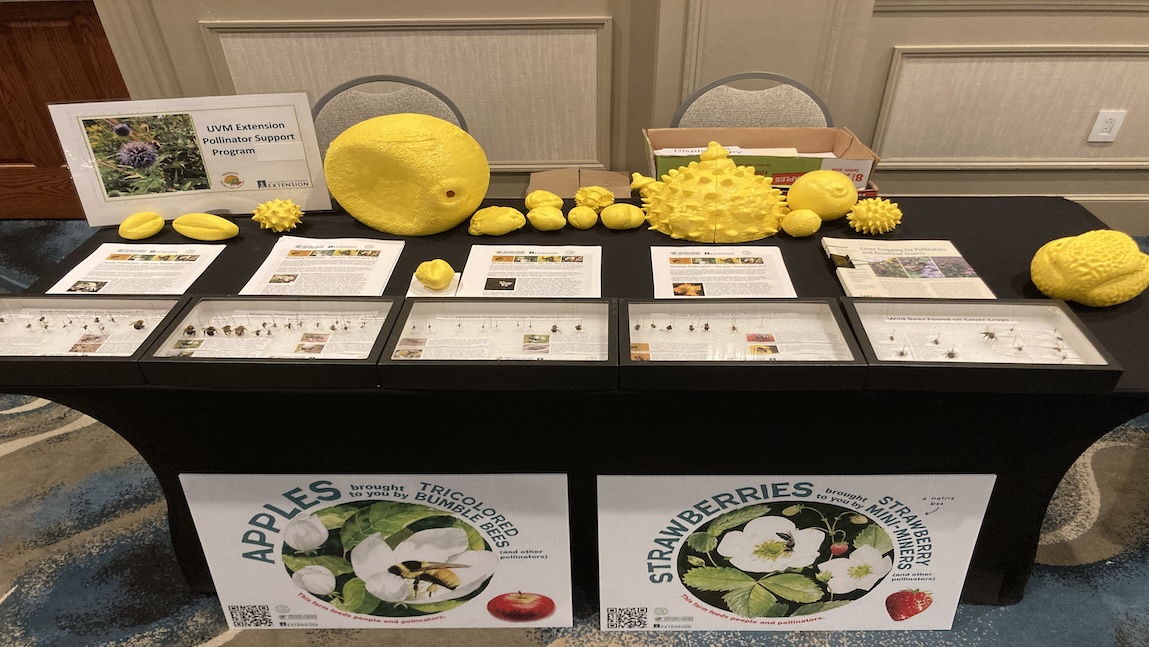Johnson’s pollinator models, that she spray-painted yellow after printing, were recently shown off at the Vermont Vegetable and Berry Grower Association Annual Meeting.
Enter the Howe media lab and you might find students wearing virtual reality (VR) headsets, a faculty member printing 3D models of pollen specimens, or an entire class engaged in world travel through VR. The creative possibilities are endless in the Center for Multimedia Development (CMD) lab, located on the first floor of Howe Library, a makerspace for mixed media projects.
“We have a wide variety of modern technologies and resources. We have state-of-the-art PCs that are fast and effortless and a versatile recording studio for podcasting or voice-overs,” said Adam Repash, media services staff in Howe Library. “The lab also has the 3D printer, which is completely free for UVM community members.”
Most importantly, the CMD lab has knowledgeable and inquisitive project partners in Repash and his colleague, Anne Dixon. On any given day, Repash and Dixon can be found teaching students, staff and faculty how to use equipment like video cameras and recorders, specialized recording or design software and more. This semester, Repash has been involved in some interesting collaborations — facilitating the use of the VR headsets as students attempt to solve the puzzle of disarming a bomb, or creating a 3D model from start to finish for UVM Extension employees who live and work far from campus.
3D Modeling a Virus
Sean Diehl, associate professor of microbiology and molecular genetics at the Larner College of Medicine, knows first-hand how the CMD lab can advance work and research.
Diehl used the lab this fall to create a three-dimensional model of part of a respiratory syncytial virus (RSV), a virus that mostly affects infants. Diehl’s UVM research lab helped develop Beyfortus, the RSV vaccine approved by the U.S. Food and Drug Administration (USDA) in July 2023.
In October 2023, Diehl hosted a presentation on his research at the historic UVM Englesby House at the request of President Garimella. Since the Englesby House does not have the ability to project, Diehl got creative, and partnered with Repash in the CMD lab.
Before this project, Diehl completed four other 3D printing models with the lab, but says that by far, this was the largest and most intricate. This most recent RSV model featured many hollow cavities. When creating the model, Repash used a water-soluble print material so that the excess material would fall off the model when dunked in water.

Diehl’s RSV model is accurate in shape thanks to Repash’s use of PVA, or polyvinyl alcohol, a water-soluble print material that allows excess material to dissolve when dunked in water.
3D Modeling Pollen
Laura Johnson, pollinator support specialist at UVM Extension, had an interest in integrating more hands-on educational materials into her work. Johnson’s work is centered around promoting best practices for pollinator health by collaborating with existing programs at the university and with partners across the state.
Since Johnson is a Berlin-located Extension employee, Repash saw the project through from start to finish while maintaining communication with Johnson in Berlin. Repash created 3D printed models of pollen grains, which are bodies that form in male seed-bearing plants and are transported, either by insects or the wind, to female plants where fertilization occurs. “In my line of work, most projects are grant-funded,” said Johnson. “So this free and effortless service was really advantageous.”
Johnson debuted her pollen grain models on January 30, 2024 at the Vermont Vegetable and Berry Grower Association Annual Meeting, a conference that gathers farmers and agricultural workers from across the state to talk shop.
Virtual Reality (VR) in Communications
Diana Popa, senior lecturer of linguistics in the College of Arts and Sciences, taught a new Honors College course this fall called Multimodal Communication. “The course looked at how communication is built through a semiotic framework,” Popa said. “We were considering how meaning is made through our own individual lenses and as a collective.”
Popa believes that modern technology goes hand-in-hand with the study of communication methods, which is why she pursued the use of VR in the CMD lab. Popa’s class played a game called “Keep Talking and Nobody Explodes.” In the game, one student wears a VR headset and is tasked with disarming a bomb. The rest of the group has the manual to diffuse the bomb. The group must communicate effectively so the VR-immersed student can disarm the bomb and save the day.
“For most of the students, it was their first time using virtual reality,” said Repash. “It was really my role to introduce the students to the equipment, facilitate the game, and ensure that they’re effectively using the technology. It’s very rewarding and a lot of fun to help students with fun resources.”
VR for Landscape Planning
Fortino Acosta, lecturer in the College of Agriculture and Life Sciences, is planning to use the virtual reality capabilities in the CMD lab for an upcoming landscape-planning class. “The students will be using VR to immerse themselves in the landscapes of Japan, Madagascar, Copenhagen, and more,” Acosta said. “I’m hoping the students will gain experience in making landscape policies. It’s important for them to be able to see the landscapes before making policies, and this is the most accessible way to do so.”
Acosta plans to have students make food, play music, and read literature from these areas they’ll be virtually visiting. As a new professor, Acosta was looking for the most updated programs and technologies for his students. He previously worked on a 3D printing project in the lab with Repash, who mentioned VR technology, and inspired him to use it in a class.
“The VR technology is completely immersive and allows you to see more details than a normal screen,” Acosta said. “It’s all about providing the students with the experience of feeling like they’re really there.”
Use the lab
The Center for Multimedia Development (CMD) lab in Howe is open for business to all UVM affiliates. Drop by the lab during Howe’s daytime hours, call (802) 656-1947 or e-mail media@uvm.edu.

